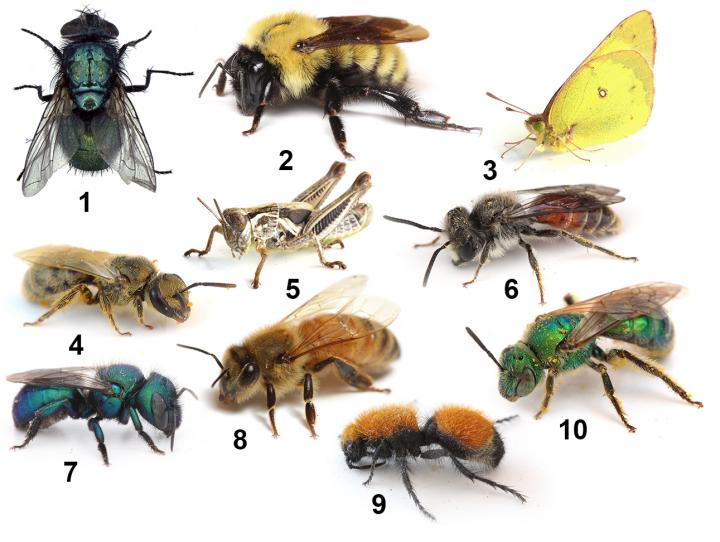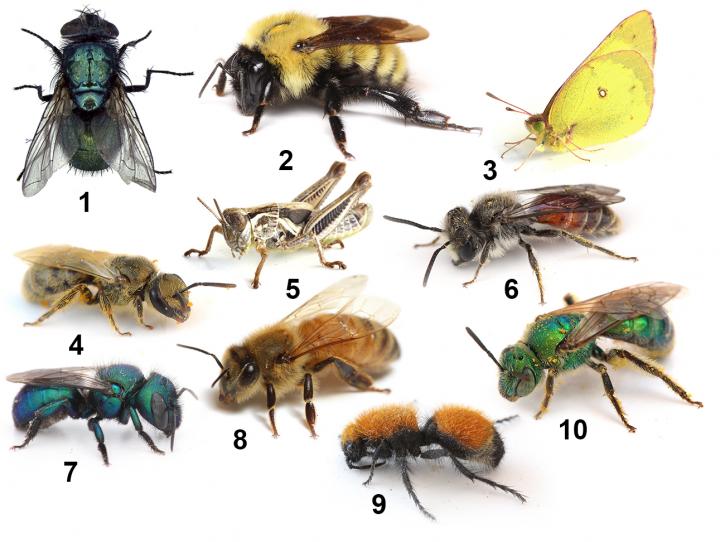
Credit: Joseph Wilson, Utah State University
Many people have heard bee populations are declining due to such threats as colony collapse disorder, pesticides and habitat loss. And many understand bees are critical to plant pollination. Yet, according to a study led by Utah State University ecologist Joseph Wilson, few are aware of the wide diversity of bees and other pollinators beyond such species as honeybees.
"The U.S. Postal Service recently released its 'Protect Pollinator' series, which features only the European honeybee and the monarch butterfly," says Wilson, assistant professor of biology at USU's Tooele campus. "A social media commenter observed that using these two species on a campaign to protect pollinators is akin to focusing on chickens to save birds. It's a pretty good comparison, actually."
Wilson, with colleagues Matthew Forister of the University of Nevada-Reno and USU alum Olivia Messinger Carril '00 MS'06, published findings in the Sept. 5, 2017, online edition of Frontiers in Ecology and the Environment.
"In our recent survey, 99 percent of our respondents said bees are critical or important, yet only 14 percent were able to guess within 1,000, the actual number of bee species in the United States," he says. "Most people estimated around 50 species of bees, while the correct number is about 4,000 known species."
Further, when shown images of varied insects, many respondents were unable to discern bees from non-bees.
"A challenge with lack of knowledge about bees is you can't protect what you're now aware of," Wilson says. "We could be losing species or causing decline and not even know it."
Public education is key to bolstering conservation efforts, he says.
"Because conservation efforts require substantial public support, it's important that the public understand bees and what needs to be done to protect these species," Wilson says. "Education and outreach are key to understanding bee declines and protecting our pollinators."
###
Media Contact
Joseph Wilson
[email protected]
435-632-9791
http://www.usu.edu
Related Journal Article
http://dx.doi.org/10.1002/fee.1531





